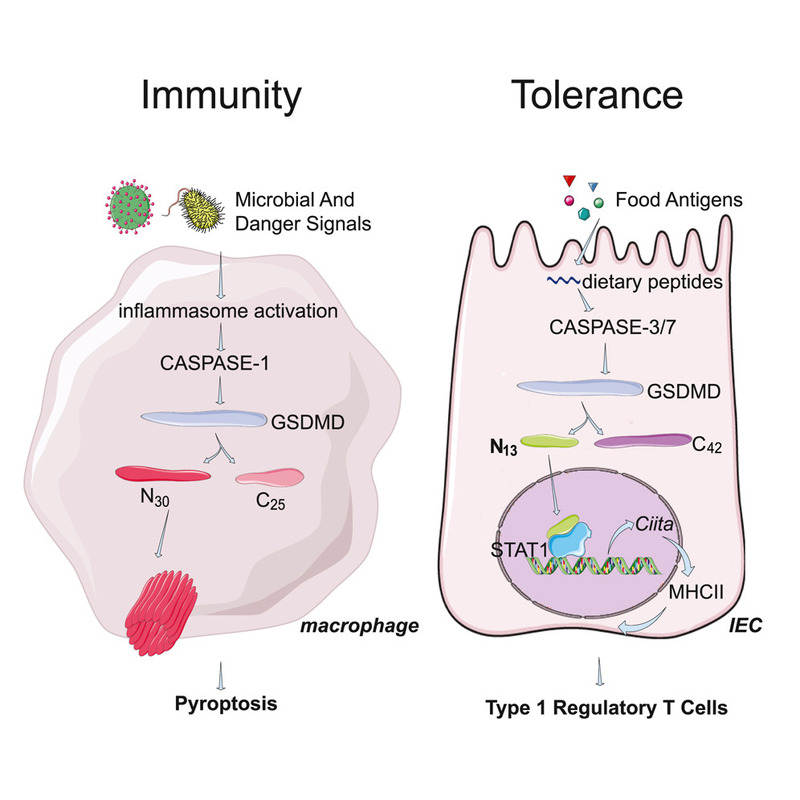Abstract
The intestinal epithelial cells (IECs) constitute the primary barrier between host cells and numerous foreign antigens; it is unclear how IECs induce the protective immunity against pathogens while maintaining the immune tolerance to food. Here, we found IECs accumulate a less recognized 13-kD N-terminal fragment of GSDMD that is cleaved by caspase-3/7 in response to dietary antigens. Unlike the 30-kD GSDMD cleavage fragment that executes pyroptosis, the IEC-accumulated GSDMD cleavage fragment translocates to the nucleus and induces the transcription of CIITA and MHCII molecules, which in turn induces the Tr1 cells in upper small intestine. Mice treated with a caspase-3/7 inhibitor, mice with GSDMD mutation resistant to caspase-3/7 cleavage, mice with MHCII deficiency in IECs, and mice with Tr1 deficiency all displayed a disrupted food tolerance phenotype. Our study supports that differential cleavage of GSDMD can be understood as a regulatory hub controlling immunity versus tolerance in the small intestine.



